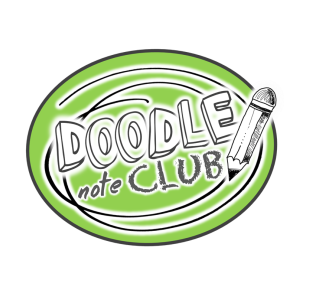5 CREATION MISTAKES THAT CAN AFFECT YOUR STUDENTS’ SUCCESS WITH DOODLE NOTES
12/22/2017
When creating Doodle Notes we are all susceptible to some mistakes; I’m guilty too! Looking back at the first ones I made, I realize they can be improved upon. And I’m sure I will feel the same way a couple of years from now about the ones I create currently. I’ve learned as I go, and am trying to always make them better and better for students.
We all know the benefits of Doodle Notes; it’s important to use them the best way possible, so you gain all of those benefits! I’ve compiled a list of some of the most common mistakes when creating doodle notes and how to correct them. I hope this helps you to perfect your doodle note creations!
Too Many Fonts
A common mistake that can create an overwhelming doodle note sheet is using too many fonts on one page. It can create a busy page that doesn’t draw in your students. A good rule of thumb when creating a doodle notes sheet is choose simply two fonts; it’s good to use one fancy font (preferably one they can color), and one basic font. This will help your doodle notes look aesthetically pleasing; your students will love them!
Stick to key words and ideas for the color-in font. The goal is to make certain areas or concepts stand out. We don’t want them coloring all day to fill in every less significant word on the page!
Be sure the basic font is readable. Fonts like Century Gothic and Berlin Sans work well here.
My favorite fancy / empty fill fonts are:
- KG Second Chances
- KB Stick to It
- The Bubble Letters
My favorite basic fonts are:
- Century Gothic
- Dom Casual
- Berlin Sans
Review the font suggestions list and download free fonts here.
Not Enough White Space
Another common mistake is not leaving enough white space. Not only does it make your page less overwhelming, but also your kids may need it to add extra notes of their own! If your students are motivated to write something down, you want to allow space for that. So, next time you’re creating a doodle notes sheet, be sure to keep this in mind!
(I am still working on this one! It’s so hard to resist the urge to include EVERYTHING!)
Misused Graphics
The third common mistake on my list is misusing graphics. Whenever adding a graphic to your doodle note page, be sure there is enough room for your students to write inside whenever possible. For example, if you wish to create a Venn diagram, make the circles a little bit bigger, so students can write in them with ease!
If you choose to include a graphic analogy or lesson-specific image, increase its size to make it a focus. See a specific example here.
Too Much “Fill in the blank”
Many of us are guilty of creating doodle notes with too much fill in the blank.
Mix it up with other student tasks. There are so many ways that the kids can interact with a page using just their coloring and doodling tools.
Some suggestions are color-coding, sketching, labeling, and lettering. Check out a variety of options here.
Disproportionate Images
One last common mistake with a simple, quick fix is using disproportionate images. Whenever you resize a graphic, be sure to resize from the corner, so it’s not too tall or short, or wide or thin.


















 I have been interested in doodle type notes for a while since I started using interactive science notebooks a few years ago. We do some sketching of diagrams already in the notebooks, but some students don’t enjoy drawing.
I have been interested in doodle type notes for a while since I started using interactive science notebooks a few years ago. We do some sketching of diagrams already in the notebooks, but some students don’t enjoy drawing.
 I teach Statistics and PAP Pre Calculus. I have been teaching high school for 19 years. In between I also worked as a stock broker, but it was a boring job and I yearned to be back in the classroom, doing something different every day , teaching, and working with others who were passionate about their career and not just a job to climb the corporate ladder and pay the bills. I’ve taught in high school in Virginia and Texas.
I teach Statistics and PAP Pre Calculus. I have been teaching high school for 19 years. In between I also worked as a stock broker, but it was a boring job and I yearned to be back in the classroom, doing something different every day , teaching, and working with others who were passionate about their career and not just a job to climb the corporate ladder and pay the bills. I’ve taught in high school in Virginia and Texas.

















